
Get our FREE class on raised bed garden design!
Matt Lebon, Owner, Custom Foodscaping in St. Louis
In our years of design and installation of veggie gardens we’ve had a chance to make plenty of mistakes. We’ve also walked up on countless gardens during a consultation and had a client frustratingly exclaim “This garden just isn't working for me."
We believe the experience in the garden should be both comfortable and beautiful. So, here are our tips for success when designing your garden!
1. Use the Perimeter!
(The green is the garden space and the beige is the pathway).

This is the same size garden y’all! And by simply using the perimeter we can more than double the garden space than if we did the standard garden, which would give us 4 small beds. PLUS… AND THIS IS HUGE– when we use the perimeter made of raised garden beds we can attach a fence/trellising to the perimeter beds. This is so huge because it means we don’t have to dig and set fence posts all the way around the garden.
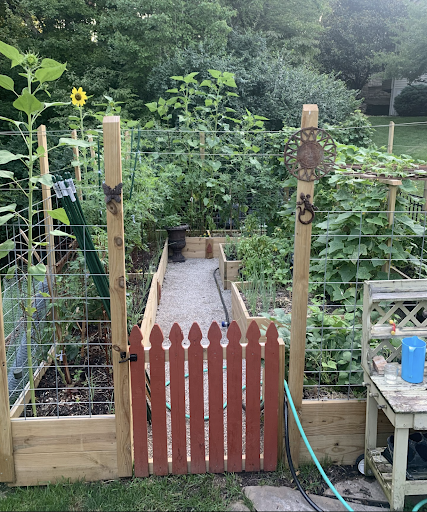
2. Think about FLOW

When you walk into a garden you should be able to move comfortably to all the garden beds, but you should also feel like you can move easily through the garden to other parts of the yard. This is especially important when locating a garden right off the patio, as seen below. You feelin’ that flow?
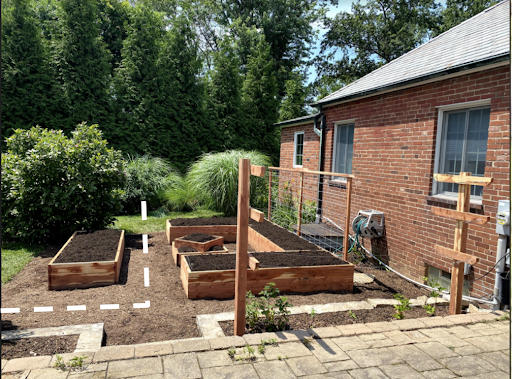
3. Use special elements.
There is nothing like a plain 'ol garden with no vertical action going on. Let’s get this garden “lifted” with awesome elements like obelisks, garden teepees and trellises. It makes so much difference to have fixed 3-D elements, especially when the plantings are still young.
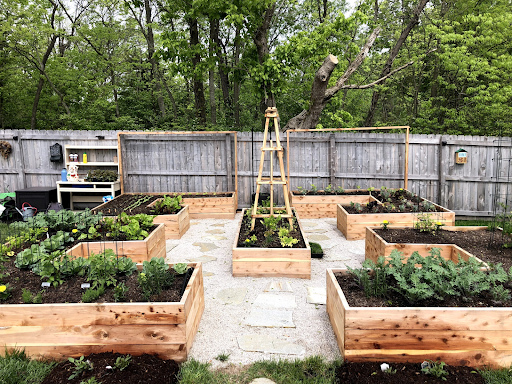
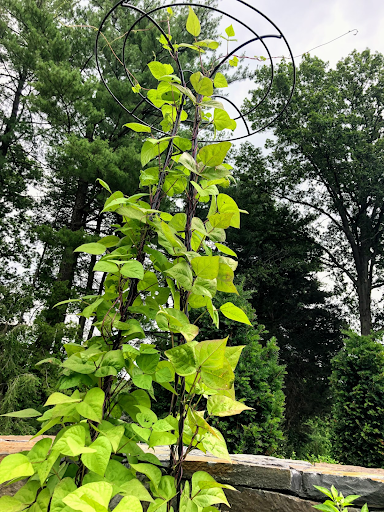

4. Create rooms
The garden feels so much magical when can can feel yourself entering and leaving different spaces within it. Entrance arbors and tunnels are key to adding this special ambiance.
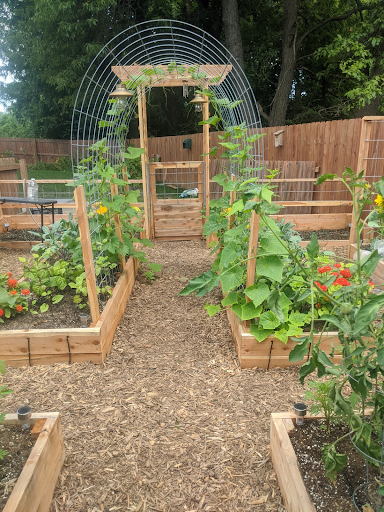
5. Keyholes are your best friends
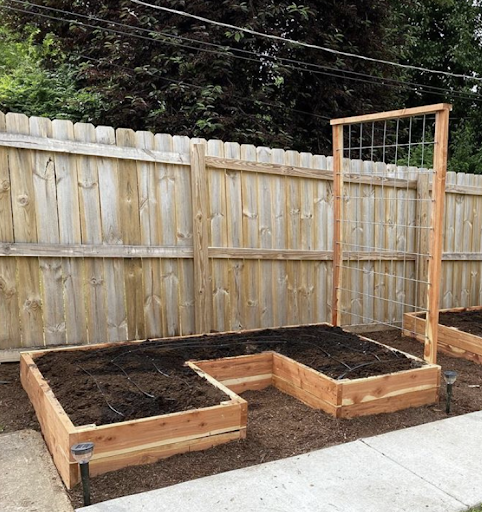
It may have been Gaia’s Garden by Toby Hemenway that popularized this approach and we’ve been running with it ever since. It’s just a great saver of space! However keep in mind that if you’re still a carpentry novice, this is notably a bit more to think through– especially when it comes to setting the beds level. One big unit like this is a really nice flat site if you’re not to break it into chunks.
6. Install north side treliises
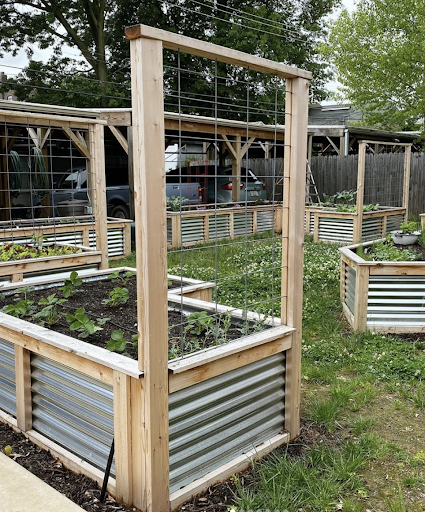
Here in the northern hemisphere the sun stays in the southern part of the sky most of day. Therefore take a look at that previous picture and guess what size we put that trellis on? It goes on the north side so that those climbing crops don’t get tall and shade the whole bed, which they would do if on the south side.
7. Incorporate perennials
If you have the space, put a perennial planting in front of the garden. The “front” being the side the client sees from their space. So, think about the view and how much some beautiful flowers stand to enhance the whole vibe as the garden is approached. Further, lots of perennial herbs and flowers like chives, thyme and lavender don’t need to take up precious raised bed space– nothing is going to eat them and they don’t need nearly as good of soil as the veggies do.
8. Use steppers when wide beds make sense
With this enthusiastic gardener, they only had a 4’ strip along the garage for a garden. So in order maximize their growing space we added in these steppers for easy access to the back while giving them as much garden space as possible.
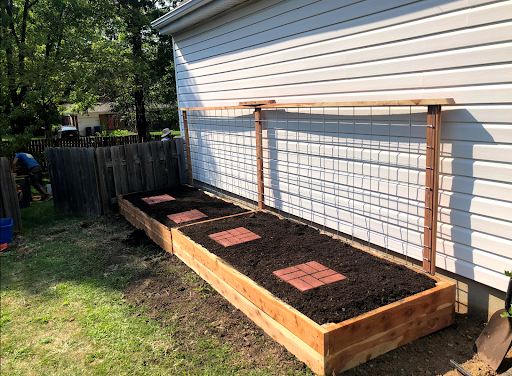
9. Avoid long beds
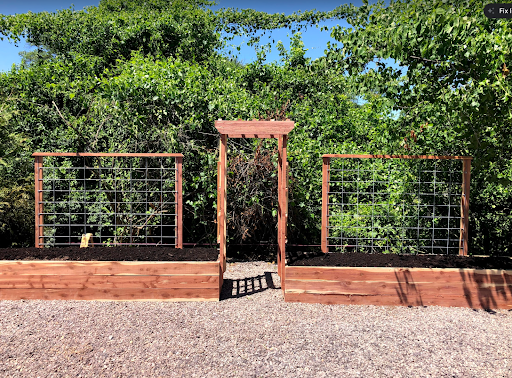
A plain ol’ long bed is hard to look at, but sometimes it's the best use of space. Therefore, I’d encourage you to break up that long bed with some centerpiece. In this case we used an arbor for climbing plants but it could well be another vertical feature.
10. Stay on contour!

What is the contour you say? It’s perpendicular to the flow of water down a space. Similarly, it’s the lines on a topographic map. It’s so key to orient your beds on contour as much as possible. Not only is is way easier to set the beds level, but you’ll also manage water a resources, by slowing it down and letting it seep into the landscape
We’d love to hear from you all. Any questions about this that we can clarify?

